Copyright 2020 - 2021 irantour.tours all right reserved
Designed by Behsazanhost
Iranian Bazaars
Iranian Bazaars
The bazaar is one of the main elements of traditional Iranian cities which was originally developed for the performance of trading and manufacturing functions; however, it has other important functions. The introduction of the bazaar to Iranian cities dates back to ancient Iran when the Medes and Achaemenids planned their cities. Urban sociologists, town planners, and town planners have generally described the concept of the bazaar as the heart of Iranian cities.
Being neighbors to government offices, courts, large religious institutions, and traditional social gathering places such as cafes and public baths, these places have facilitated interactions between cities and also established multiple social dimensions (commercial, social, political, religious, neighborhood, etc.) for them; therefore, these are not purely economic interactions. The bustle and central location of the bazaars make them a major public forum that attracts diverse people who exchange and hear information, rumors, and opinions on economic conditions, family matters, and political disputes in connection with the conduct of their personal affairs.
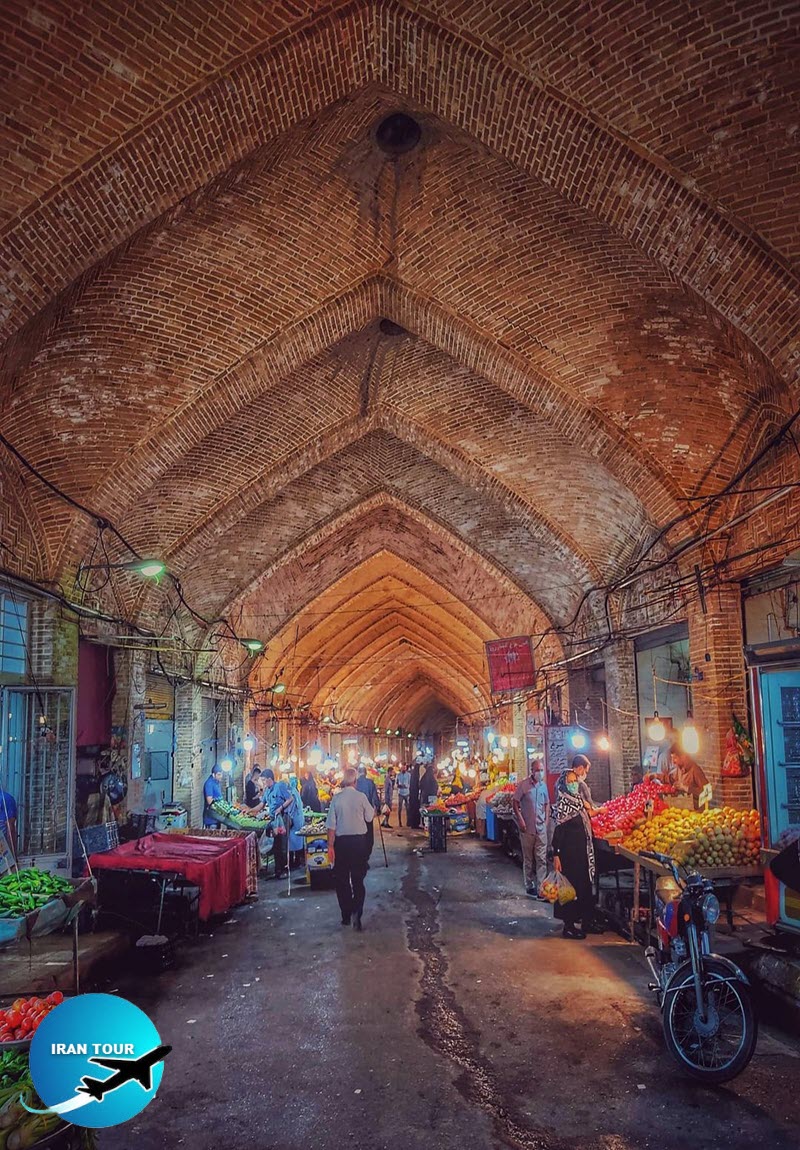 |
Besides their traditional alliance with mosques, traders who negotiate in bazaars have links with different social groups; in this way, they were able to act in cooperation. These cooperative hierarchies were imbued with a sense of belonging and solidarity that intrinsically motivated the bazaar traders to trust the process of collective action. As the main social and pedestrian network of the city through which locals pass daily, the bazaars have hosted various public gatherings and have also played a crucial role in the development of characteristics such as local identity, sense of community, and l 'attachment to place. These social qualities, combined with the economic and manufacturing advantages of the bazaars, have contributed significantly to improving the livability of the city.
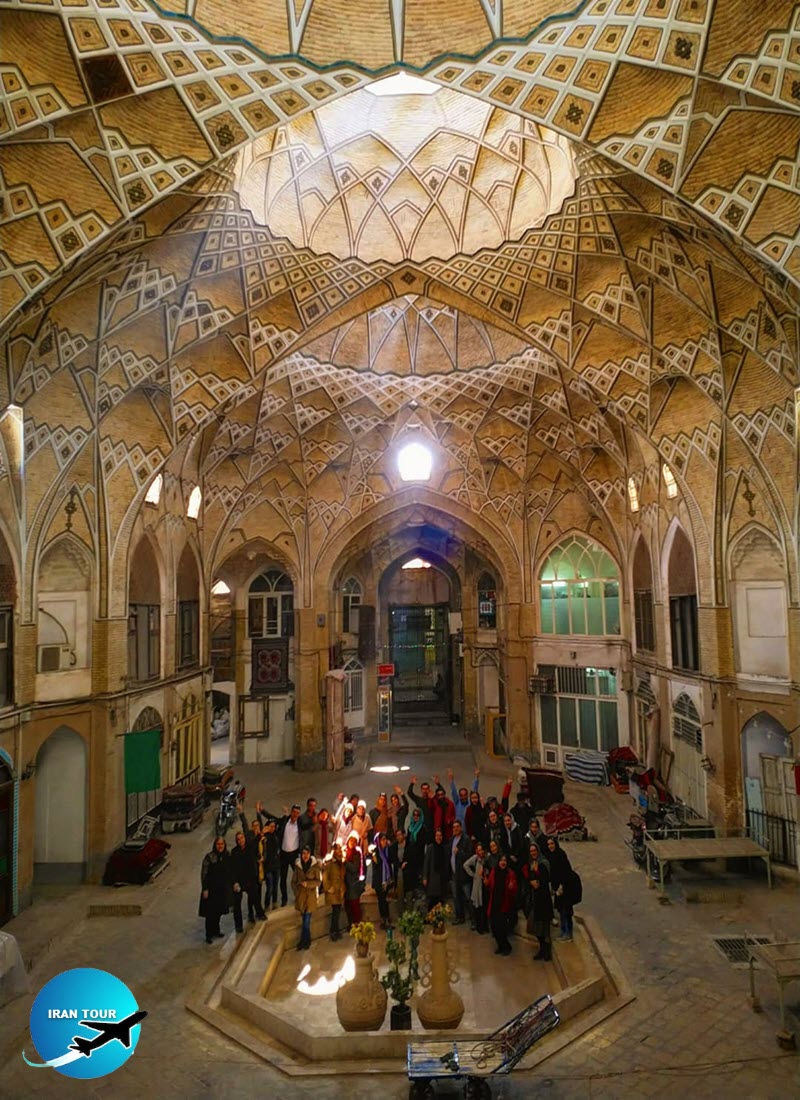 |
Structure of the Bazaar in an Islamic Iranian City
The study of urban history reveals that a variety of factors influenced the development of ancient cities. The economy has always been one of the most important factors in urban growth. In a traditional Iranian city, the bazaar has been a place for the economic, social, political, cultural, and civic activities of the people. In fact, the bazaar was one of the key elements of the spatial organization of Iranian cities so the main body of the city could not be defined without the existence of a bazaar. In many historic towns, the main transportation routes have been established in relation to the main “Bazaar Rasteh”; therefore, historic bazaars have always had an important role in shaping city shapes.
A crucial idea asserts that the structure of traditional cities in Iran is based on the economic and political factors of their bazaars. From the beginning of Iranian urbanization until the present day, different factors have played in the formation of traditional cities. This composition has had its own form in each period, and the rulers complement this combination to show their strength and wisdom. Some scholars believe that bazaars are the main nucleus of Islamic cities; others see the “Jame Mosque” as the city center; while some believe that both are the main concepts of Islamic cities.
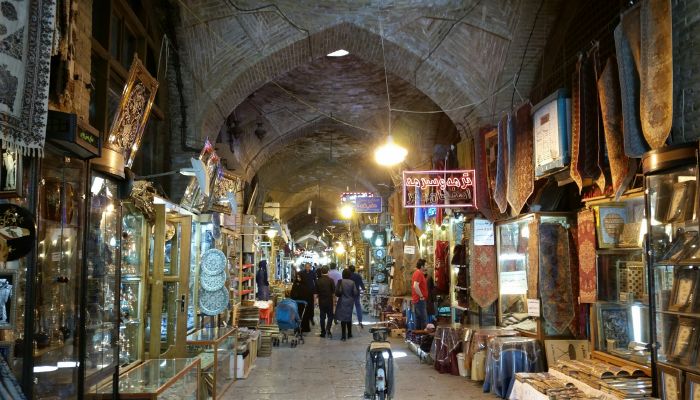 |
Iranian bazaars have been the center of virtually all economic activity. They link rural areas to local and regional urban consumer markets and integrate provincial towns into modern industrial sectors. A bazaar also provides bridges between the middle and lower classes of Iranian society and has been considered one of the most important socio-spatial systems in Iranian cities based on Iranian urban studies. The structure of traditional Iranian cities reveals that a bazaar, which usually takes a linear shape, acts as the backbone of the city and extends towards the main city gates. A bazaar is thus established in the heart of Iranian Islamic cities. An Iranian city is often defined by a Jame congregational mosque and must have a main bazaar nearby. For the economic and commercial activities of Iranian cities, the bazaar is the most important public space.
 |
Tehran Grand Bazaar
The maze of bustling alleys and the bazaaris (shopkeepers) that fill them make this a fascinating, if somewhat daunting, a place to explore. Despite being known as the Grand Bazaar, most of the architecture is less than 200 years old and pedestrian, although there are some gems to be found. Visit in the morning, when business is brisk but not yet frantic - later in the day, the chance of being run over by a piece of fast-moving haulage equipment is high. The bazaar's covered stores line more than 10km of lanes and there are several entrances, but you get a great view down a central artery by using the main entrance facing the square Sabzch Mcdyan. The warren of people and goods is a city within a city and includes banks, a church, a fire station, and several mosques, most notably the impressive Imam Khomeini Mosque, and the ornately decorated Imamzadeh Zeid, a shrine to a descendant of the prophet.
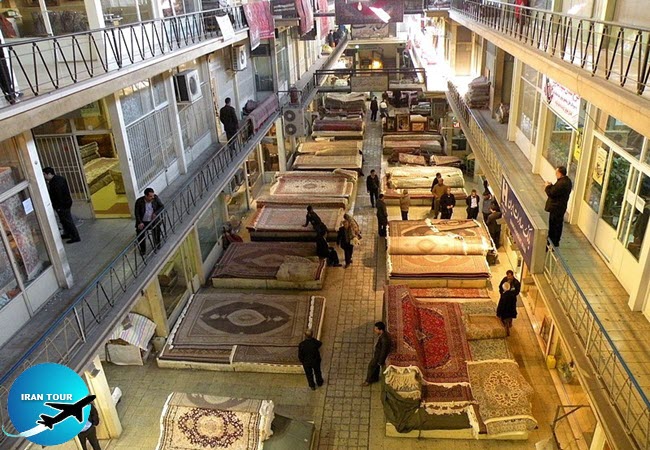 |
Most lanes specialize in a particular commodity: copper, paper, gold, spices, and carpets, among others (note though you won't find fresh food here). The carpet, nut, and spice bazaars might be the most photogenic, but the lane of stores selling fake designer labels (literally labels, not clothes) also catches the eye. In our experience, there are two ways to visit the bazaar. One is to simply wander the labyrinth of streets and alleys, taking whichever turn you fancy and going with the flow. If you get lost, remember to walk uphill to the main exits on Panzdah-e Khordad Ave. Alternatively, allow yourself to be befriended by one of the carpet salesmen. Tell them what sections of the bazaar you'd like to see and they will lead you.
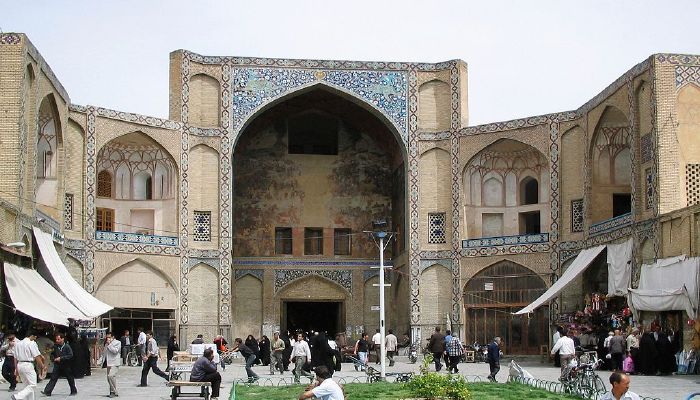 |
Isfahan Bazaar
The Isfahan bazaar is one of the super active bazaars in Iran, that has unique scientific values, and all of the city's identity is visible through it. These architectural elements have been used around the Isfahan bazaar's buildings and monuments. This bazaar is not just a commercial center but also has essentially religious, cultural, social, and political roles in the city. Other urban activities such as the residential quarter surround this part of the city, supplying the citizens' daily needs. This bazaar is also called the royal bazaar and is one of the best-preserved examples of the large, closed, and covered bazaars that have been in the Muslim world before the 20th century.
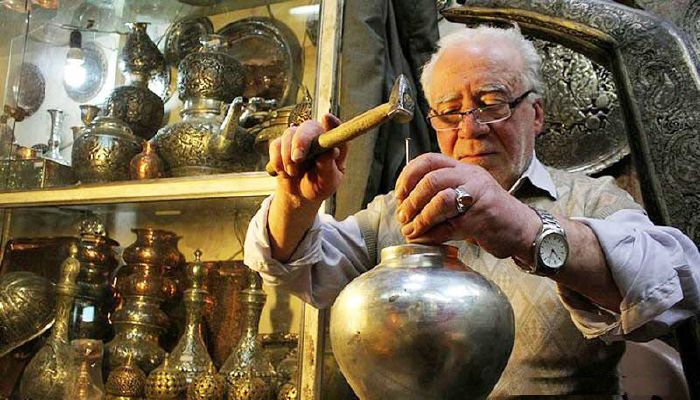 |
Isfahan Bazaar Complex consists of a large number of shops or bazaar buildings, usually referred to as bazaar or in smaller rows as bāzārča. Next, there are the sarāys or caravanserais, and their smaller version, the so-called timčas. Also, there are a number of mosques, schools, baths, Carevanseaies, and water stores most of which were built in the 17th century and some in the late 19th century. These monuments are characterized by different designs and some, like the Ḥakim Mosque, are as beautiful as the Royal Mosques on the Naghsh e Jahan Square.
These public charity buildings, which are generally built by charities and in some cases by governments, are run with public and government assistance. These monuments not only facilitate the public life of the people but also plays an important role in their national and religious beliefs. Here the population of the bazaar undertakes their daily prayers and participate in religious ceremonies. Despite the fact that the Isfahan Bazaar has long lost all semblance of its former courteous association, this Bazaar remains a vibrant centerpiece of the city, a place of varied functions, from the obvious commercial environment to its religious, educational, social, and recreational roles. This bazaar is one of the most attractive places for tourists who visit this historical city.
 |
Vakil bazaar
It is a street market, almost a quarter-mile long, made entirely of brick with an arch that more or less resembles the "pyatzas" in Covent Garden. The design of this building with an area of 31,840 square meters and infrastructure of 22,960 square meters (including inns) is taken from the Caesarea Market of Lar and the Long Bazaar of Isfahan, which was built by Shah Abbas the Great. Compared to these markets, Vakil Bazaar is wider. It also has 74 flapping arch spans over 11 meters high, which is higher than other markets, today the height of the vaults was reduced to 10 meters due to the filling in of the market floor. This bazaar has three passage rooms (passage area for customers), a shopfront (with a height of approx. 2 steps above the floor), a shop space (sales point). It also has five large doors on its four corners. It includes two large north-south and east-west passages that cross each other. The intersection of these two categories, Chaharsooghi, is on a porch. It has a strong arch and at the base of the arches, there are some masonry bergamots. There are several rectangular two-story shops in the vestibule. Houses and other buildings connected to the market are located on the edges around the main path and can be accessed through a few doors and corridors to the market. After Zand Street was built, the northern and southern rests of Bazar were cut at a point near Chaharsooghi and now there are some rooms and arches in this section.
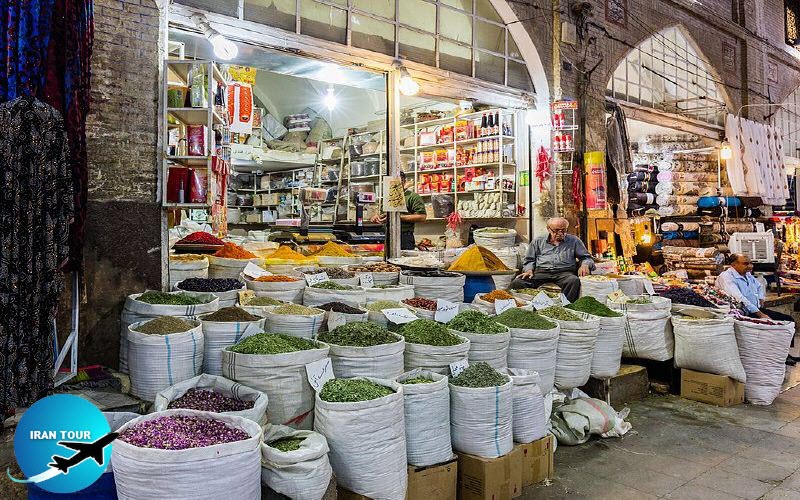 |
This architectural masterpiece in the history of Iran is still strong and alive. In the store plan, light and temperature are controlled by skylights and networking so that it is cool in summer and warm in winter. This bazaar included forty-one arches to reach the Chaharsooghi. In the middle of the market, there was another eleven arch markets called Shamshirgiran market, another forty-six arch market called Kolahdoozan market, another nineteen arch market called Yraqbndan, and finally another ten arch market called Sarajan. At the top of each chamber, there were a few windows that allowed the central part of the market to be illuminated. Air conditioning due to the high ceilings of arches and Tavizeh of the market is complete. This is done using simple fans. In the past, some exhaust valves and openings called Jamkhaneh or Hurnur were recessed under the ceiling, which provides the air and light needed for the market. But now, after the restoration, these openings and valves are closed, instead, there are some openings above the shutters for lighting and air conditioning.
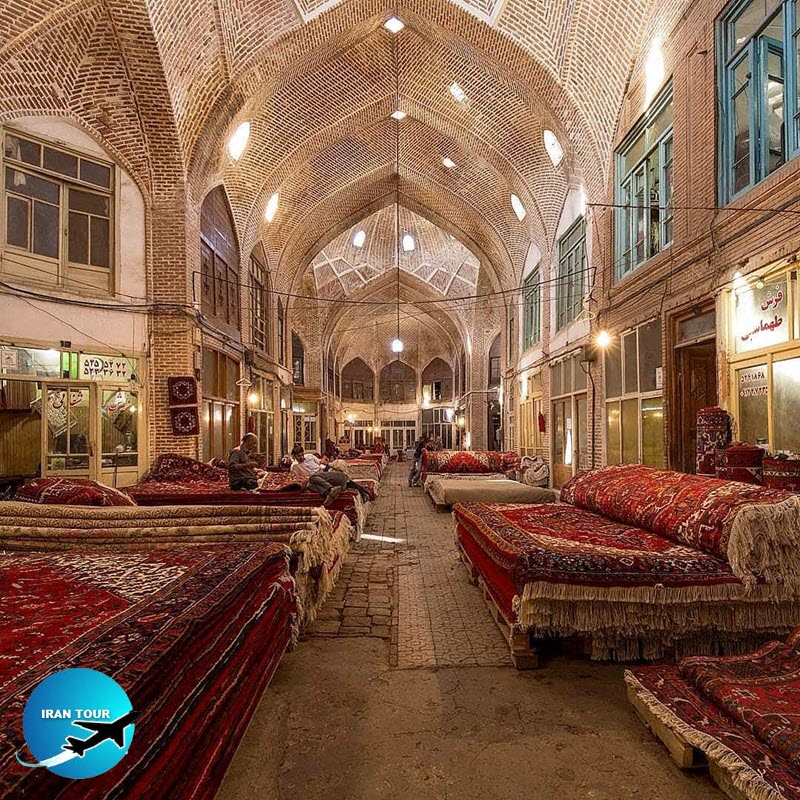 |
Tabriz bazaar
The Tabriz Bazaar in the center of the city of Tabriz in northwestern Iran stands out considerably. In 2010 it was added to the UNESCO World Heritage List as one of the most important international trading centers along the Silk Road. This residential complex has evolved from the early centuries of the Islamic era on the basis of a strong traditional social system and an outstanding example of Islamic bazaars. it is one of the most influential trading centers not only in the northwest but in all of Iran.
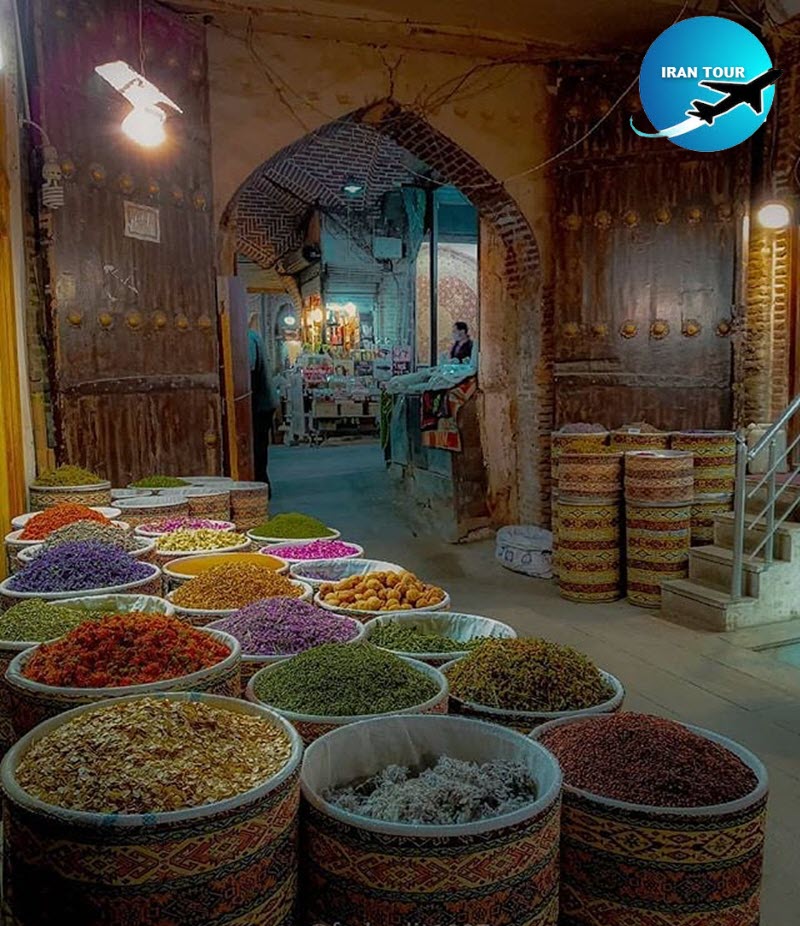 |
Tabriz enjoys an exceptional strategic location and is a major trading city and has developed under the influence of commercial circumstances. The social and economic history of Tabriz shows that the traditional bazaar has succeeded in integrating the social and economic foundations of the city and thereby decisively shaped the city's cultural and economic development. The internal structure of the Tabriz bazaar is also a clear testimony to its social and economic role in past society. In Tabriz Bazaar there are several commercial buildings such as thousands of Dokkans that make up 30 rastas (covered paths), 25 caravanserais, 20 Timchas, and 8 Bazarchas (cluster bazaars), as well as 28 mosques, 3 mausoleums, 6 madrasas, and 2 libraries which were built serving religious functions in addition to a historic Meydan (square) which was the government center of the city. On the other hand, there are a large number of tea houses, 5 hammams, a Yakhchal (ice house), and a Zurkhana which are open to the public.
 |
Kerman bazaar
Kerman Bazaar is the second biggest Bazzar of Iran after Tabriz Bazaar(Recorded at UNESCO). This Bazarr as the historic central core of Kerman city has expanded into two main East-West and North-South Axis. The main entrance portal of the East-West axis is located in Arg Square. The East-West axis connects Arg Square to Moshtagh Square. In the initial design of this market, all the necessary public facilities such as mosques, baths, Caravanserais, Takieh(a religious public place), traditional schools, and water-reservoir have been designed and located. This complex is still active and it is representing a well-defined public place in Kerman province. This valuable historical and architectural complex has different sections that dazzle the eyes of every viewer while passing through this market.
The different segments of this market are:
Bazaar complex
The mixed configuration of the bazaar in the Kerman old texture center with a beautiful appearance remained from ancient times. Its architectural specifications surprised everyone. Kerman Bazaar is one of the most important bazaars in Iran that includes many valuable complexes such as Ganjalikhan, Ibrahimkhan, Vakil and etc…
This Bazaar has different parts like:
- North coppersmithing bazaar (Mesgary bazaar)
- Arg Bazaar
- West Coppersmithing Bazaar
- Ekhteyari Bazaar
- Mozaffari bazaar
- Indian caravansary
- Golshan house
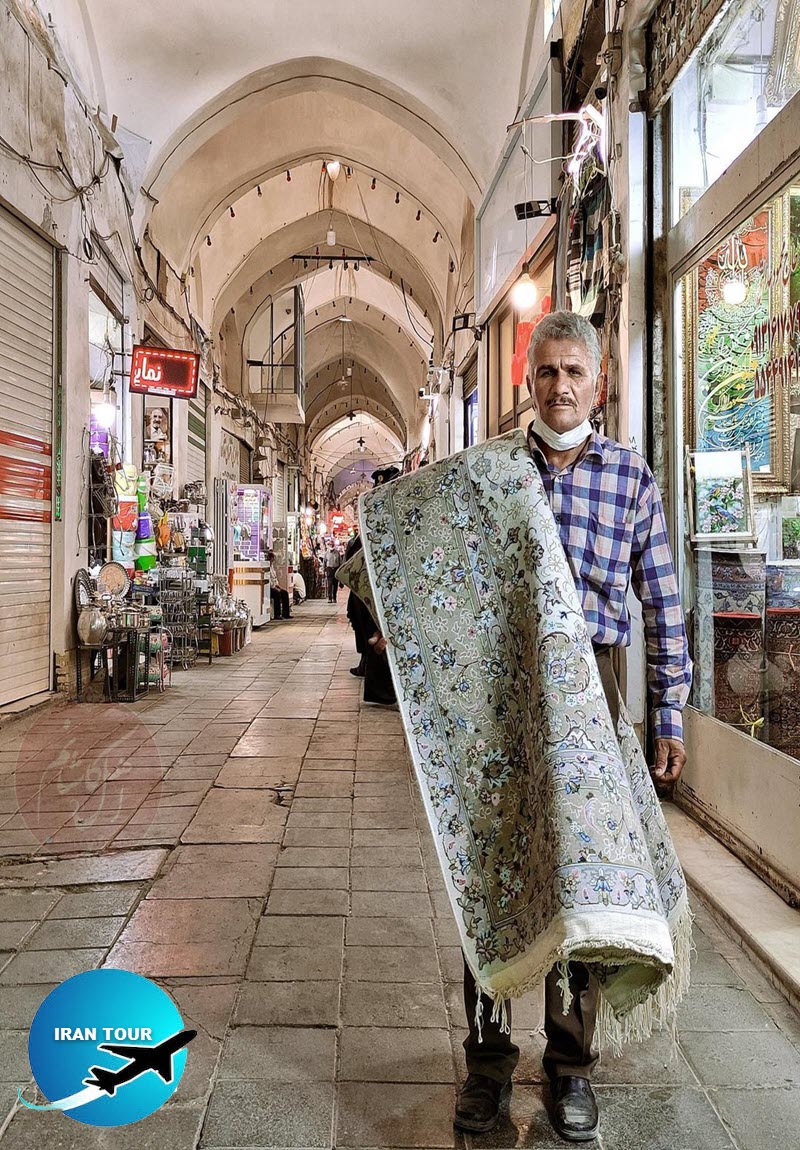 |
Kashan Great Bazaar
One of the most beautiful and fascinating sites of Kashan is its 13th-century great bazaar. This bazaar is extended and renovated during different dynasties but it was rebuilt during the Safavid rule. This place was not only an important economic and trade center of the town, but also a place for social gatherings, public festivities, and even royal feasts. Like many other structures in the town, the bazaar was destroyed during the earthquake of 1778 and restored soon afterward at the order of the Zand ruler. It was further expanded and modified throughout the 19th and 20th centuries.
The most notable modifications were undertaken during the rule of Fathali Shah Qajar, and the most beautiful sections of the modern bazaar date from this period. The architectural and decorative treatment of the complex is very impressive. Its high vaults, lanterns, and ornamentation of the structures rival the best achievements of Iranian art. The bazaar stretches from Municipality Square (formerly the Dowlat Gate) to Feiz Square, opposite the Meydan Mosque, and branches off the main alley in numerous trade rows.
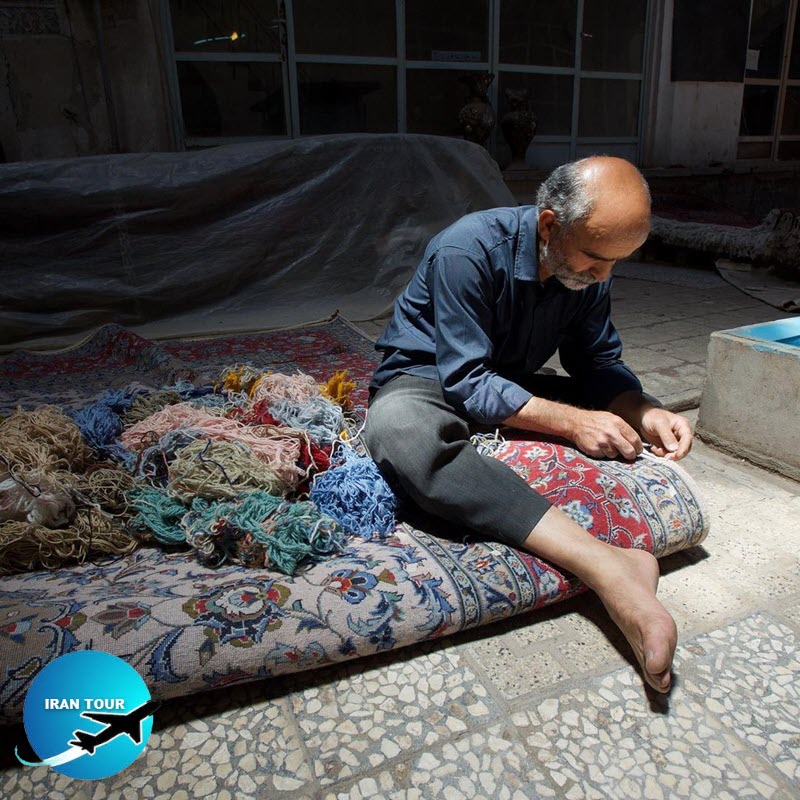 |
There are more than 120 shops along the bazaar's main alley. Almost all of them are two-story and have a balcony on the upper floor. Often the alley is interrupted by spacious squares (Chaharsu), which are usually surrounded by the richest shops. Much of Kashan's bazaar has suffered greatly during the laying of modern streets, and some of its trade rows, caravanserais, and depots are completely gone. Luckily, the bazaar still has many beautiful sites that make it worthy of a tourist's visit. The most magnificent part is Amin al- Dowleh Timcheh, one of the numerous structures built at the order of Farrokh Khan Ghaffari Kashani, titled Amin al-Dowleh. The construction was completed in 1868. It is still an active trade center specializing in handwoven carpets and rugs. It consists of a roofed square encircled by rows of shops arranged in three stories. This Timcheh is deservedly considered a marvel of architecture.
Other remarkable structures inside the bazaar include the caravanserais of Nou, Brujerdiha, and Mirpanj; the mosques of Meydan, Bala Bazaar, and Tabriziha; bathhouses of Khan and Gozar-e Nou; bazaars of coppersmiths, goldsmiths, dyers, Gozar-e Nou, Pa Nakhl, and Qeysariyeh. The bazaar is the best place for purchasing the specialties of the Kashan region These include carpets, velvet, brocades, hand-woven Zilu (pileless carpeting), rosewater, and herb distillates from Qamsar and Niasar, copper vessels, sweets of Kashan, pomegranates of Fin, and dried nuts and fruits.
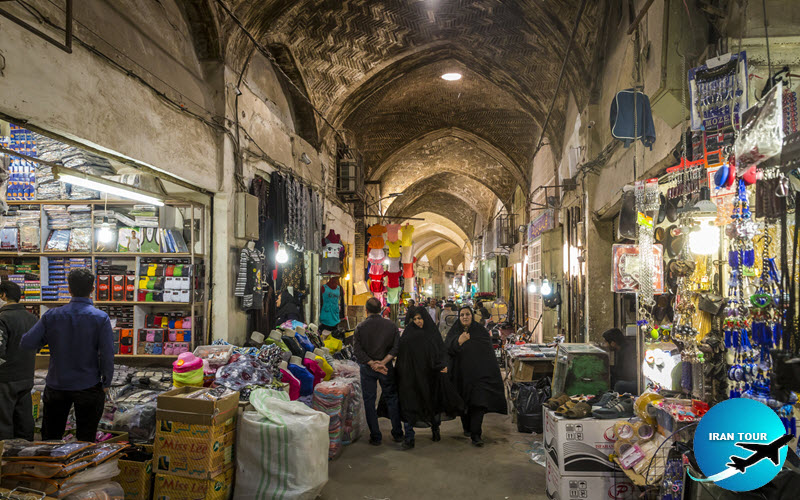 |
Yazd Khan bazaar
It is known as one of the ancient landmarks in Yazd. It is located in the center of Ghiyam Street. The construction goes back to the era of Nasreddin Shah Qajar. The beautiful and old Khan Bazaar complex, Hosseineh, cistern, and the bath next to it reference the past architecture of this region. Different structures and contradicting ordinates of this bazaar testify to its gradual structure. The Khan Bazaar is 274 meters long and its height changes from 4 to 6 meters. The Khan Bazaar is indeed the longest and widest bazaar in Yazd. The materials used in this construction are mainly sun-dried bricks, clay, and bricks. This bazaar has 2 sections:
North-South and East-West. The north-south part of this bazaar is 78 meters long and has 53 shops. The east-west section is also 180 meters long and has 100 shops.
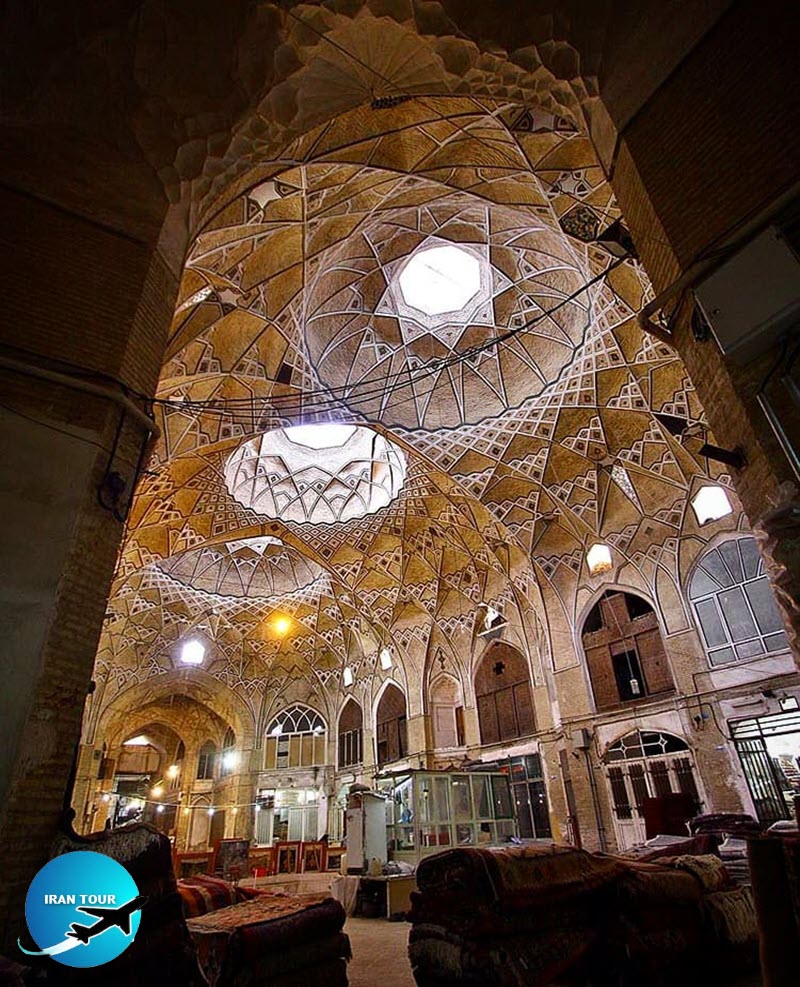 |
Qom Old Bazaar
It is a beautiful old and traditional bazaar in the heart of Qom holy city. Some of the historical areas of the bazaar date back to the Saljuqi and Eilkhani periods. In fact, the old bazaar and the surrounding buildings date from the pre-Safavid period, but the architecture, layout, general network, and arcades of the new sector date mainly from the Safavid and Qajar periods. The new part of the Qom bazaar was enlarged in the middle of the Qajar period on the orders of Naser al-Din Shah. Several other important pieces were also added during the Pahlavi period for commercial reasons.
A short walk from Astane Square, one of Iran's most authentic covered markets is worth a visit. With a small khan in the middle and the usual labyrinth of alleys, it differs from other places of commerce of this type in that it represents "business as usual" for the inhabitants of Qom, with little or no concessions to modernity. or visitors. An ideal place to feel the continuity of commerce through the centuries. The most obvious access to the bazaar is through an archway on Nuzdah-e-Dey Street. An obvious main thoroughfare runs through the spice market and gold souk, haberdashery, and hardware store.
- Details
- Category: What to see in IRAN